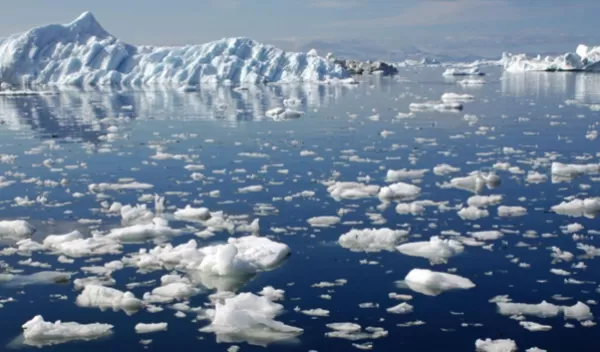
Carbon and climate change in an ancient 'icehouse' world
A new study describes a period of rapid global climate change in an ice-capped world much like the present -- but 304 million years ago. Within about 300,000 years in that long-ago time, atmospheric carbon dioxide levels doubled, oceans became anoxic and biodiversity dropped on land and in the seas.
"It was one of the fastest warming events in Earth's history," said Isabel Montañez of the University of California, Davis.
Although several other "hyperthermal" or rapid warming events have happened on Earth, this is the first identified during an "icehouse" time when the planet had ice caps and glaciers comparable to the present day.
The U.S. National Science Foundation-supported work shows that an icehouse climate may be more sensitive to changes in atmospheric carbon dioxide than warmer conditions when CO2 levels are already higher. The results are published in Proceedings of the National Academy of Sciences.
"These results provide rare insights from past climate change during one of Earth's previous glacial states," said Jonathan Wynn, a program director in NSF's Division of Earth Sciences. "The findings highlight the importance of evaluating the response to increased CO2 and abrupt warming under a range of baseline climate states to better constrain models of climate processes and feedbacks in the Earth system."
Montañez and colleagues studied the period from 300 million to 260 million years ago, when Earth's climate went from a glacial icehouse to a hot, ice-free greenhouse. The scientists showed that climate swung back-and-forth several times during this period.
Montañez's team and others also looked at a transition 304 million years ago, called the Kasimovian-Gzhelian Boundary. The researchers used multiple proxies, including carbon isotopes and trace elements from rocks and plant fossils, and modeling, to estimate atmospheric CO2 at the time.
The scientists estimate that about 9,000 gigatons of carbon were released into the atmosphere just before the Kasimovian-Gzhelian Boundary doubling of atmospheric CO2 from approximately 350 parts per million, comparable to modern pre-industrial levels, to about 700 ppm.
The massive carbon release may have been triggered by volcanic eruptions that tore through carboniferous coal beds, Montañez said. The eruptions would have started fires and the warming may have melted permafrost, leading to the release of yet more organic carbon.


